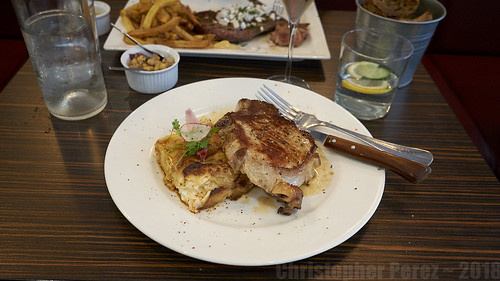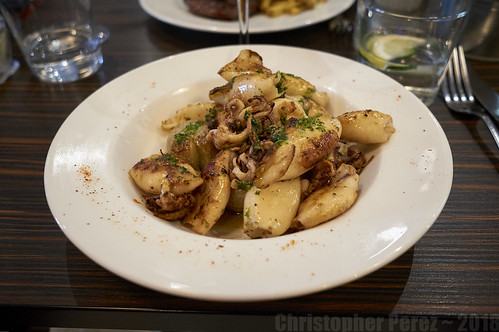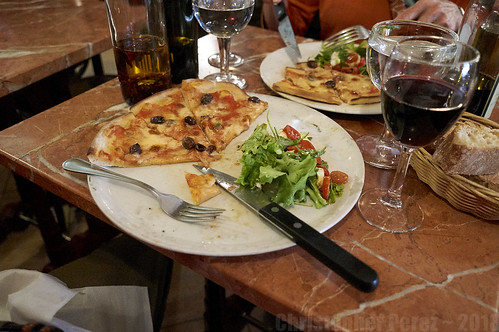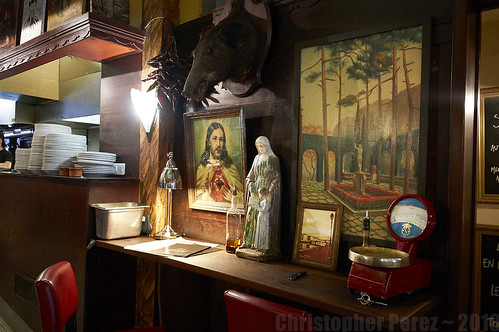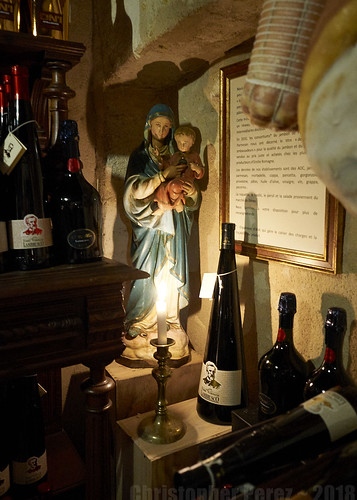I find the history of black Americans fighting in Europe during the Great War (WWI) and World War Two to be a fascinating topic. Of the many stories and histories, one of the more interesting is about how a regiment of US military men brought a uniquely American music to France.
After the American Civil War and before the Great War in Europe the 15th New York National Guard Regiment had been formed around freed slaves who were looking for a way to contribute to the security and safety of America. The unit was made up of black Americans and, somewhat later, Puerto Ricans. The unit became known as the 15th Brooklyn "Rattlesnakes".
In 1917 leaders in the United States knew there weren't enough men to make an effective army and that the nation was edging toward participating in the Great War. This lead to the Selective Service Act of 1917. White and black men could register to fight for America. The 15th New York was folded into the new military structure and became the 369th Infantry Regiment where they received combat training.
Before US military participation in the Great War in 1918, German submariners had been sinking Europe-bound cargo vessels at a frightening rate. In response, the Navy escorted convoys of cargo ships as they crossed the Atlantic to give protection to the fleet.
President Woodrow Wilson did not want black Americans returning home with combat experience. He feared they would make trouble for white people. So the order was given that no black military unit was to see action along the front lines. It was up to General John "Nigger Jack" (aka "Black Jack") Pershing to see this order was correctly executed.
Instead, black units would be deployed to do the kinds of work and service former slaves did back home. They built roads, dug ditches, cooked food, and cleaned.
When the status of the 369th Infantry was changed from support to active service white soldiers refused to fight alongside their black countrymen. Further, deploying them to the front lines would be a direct violation of President Wilson's order against black units in combat.
Naturally this led to a question about what to do with the Regiment. To answer the question, on 8 April, 1918, the 369th was reassigned to fight on the side of the French. They were issued French weapons, helmets and other gear, though they continued to wear their American uniforms.
President Wilson was furious and demanded to know why General Pershing had allowed this to happen. The General replied that they were on loan to the French and therefore were no longer under US command. The 369th served longer at the front than any American unit, received 170 Croix de Guerre, 2 medals of honor, suffered 1500 casualties and gained the respect of France.
In addition to being filled with capable fighting men, the 369th Regiment had a band and it's leader was a man named James Reese Europe. There are several interesting things to note about M.Europe and his band. For one, he studied under John Philip Sousa and adopted the cadence, beat, and rhythm of M.Sousa. By making a few minor "tweaks" to the musical style and over the years leading up to the Great War, M.Europe has been credited with developing what we now know as "Ragtime".
On 27 December, 1917 the 369th Infantry was bound for Brest, France. They were all alone and potentially easy prey to German submariners. M.Europe, his band, and the regiment crossed the ocean unescorted by the US Navy. Yet they arrived at the French harbor intact.
Upon arrival they debarked, assembled the band, and in celebration of their safe crossing as well as to introduce themselves to the French they started to play. The French were curious. As they listened they tried to sort out what they were hearing. Then it dawned on them.
What they were listening to was the Marseillaise played in the "Ragtime" style. The French went crazy. Here was a new musical form. Here were a bunch of "cool black cats" who could really play. Here was found a new love. The music seemed tailored to French sensibilities and style. They loved it and the roundly welcomed the black Americans who brought them Jazz.
M. Europe, his band, and the 369th returned to home to Jim Crow America. The year 1919 became known as the Red Summer. America rose up in riot against the black men who returned from helping liberate France.
[Note: I am from being an expert in this history and only share what I've heard in a conference, heard in talking with Parisians, and learned from reading. Each and every highlight I shared above is backed by a deep, rich history, filled with interesting and revealing details and stories. From what I can tell, the band of the 369th Regiment may well have been the first contact the French ever had with what would quickly become a uniquely American musical form. If the subject interests you, it might be well worth doing a bit of research along these lines.]
[Inspired by a lecture given at Columbia University, Paris, France by Curtis Young]
After the American Civil War and before the Great War in Europe the 15th New York National Guard Regiment had been formed around freed slaves who were looking for a way to contribute to the security and safety of America. The unit was made up of black Americans and, somewhat later, Puerto Ricans. The unit became known as the 15th Brooklyn "Rattlesnakes".
In 1917 leaders in the United States knew there weren't enough men to make an effective army and that the nation was edging toward participating in the Great War. This lead to the Selective Service Act of 1917. White and black men could register to fight for America. The 15th New York was folded into the new military structure and became the 369th Infantry Regiment where they received combat training.
Before US military participation in the Great War in 1918, German submariners had been sinking Europe-bound cargo vessels at a frightening rate. In response, the Navy escorted convoys of cargo ships as they crossed the Atlantic to give protection to the fleet.
President Woodrow Wilson did not want black Americans returning home with combat experience. He feared they would make trouble for white people. So the order was given that no black military unit was to see action along the front lines. It was up to General John "Nigger Jack" (aka "Black Jack") Pershing to see this order was correctly executed.
Instead, black units would be deployed to do the kinds of work and service former slaves did back home. They built roads, dug ditches, cooked food, and cleaned.
When the status of the 369th Infantry was changed from support to active service white soldiers refused to fight alongside their black countrymen. Further, deploying them to the front lines would be a direct violation of President Wilson's order against black units in combat.
Naturally this led to a question about what to do with the Regiment. To answer the question, on 8 April, 1918, the 369th was reassigned to fight on the side of the French. They were issued French weapons, helmets and other gear, though they continued to wear their American uniforms.
President Wilson was furious and demanded to know why General Pershing had allowed this to happen. The General replied that they were on loan to the French and therefore were no longer under US command. The 369th served longer at the front than any American unit, received 170 Croix de Guerre, 2 medals of honor, suffered 1500 casualties and gained the respect of France.
In addition to being filled with capable fighting men, the 369th Regiment had a band and it's leader was a man named James Reese Europe. There are several interesting things to note about M.Europe and his band. For one, he studied under John Philip Sousa and adopted the cadence, beat, and rhythm of M.Sousa. By making a few minor "tweaks" to the musical style and over the years leading up to the Great War, M.Europe has been credited with developing what we now know as "Ragtime".
On 27 December, 1917 the 369th Infantry was bound for Brest, France. They were all alone and potentially easy prey to German submariners. M.Europe, his band, and the regiment crossed the ocean unescorted by the US Navy. Yet they arrived at the French harbor intact.
Upon arrival they debarked, assembled the band, and in celebration of their safe crossing as well as to introduce themselves to the French they started to play. The French were curious. As they listened they tried to sort out what they were hearing. Then it dawned on them.
What they were listening to was the Marseillaise played in the "Ragtime" style. The French went crazy. Here was a new musical form. Here were a bunch of "cool black cats" who could really play. Here was found a new love. The music seemed tailored to French sensibilities and style. They loved it and the roundly welcomed the black Americans who brought them Jazz.
M. Europe, his band, and the 369th returned to home to Jim Crow America. The year 1919 became known as the Red Summer. America rose up in riot against the black men who returned from helping liberate France.
[Note: I am from being an expert in this history and only share what I've heard in a conference, heard in talking with Parisians, and learned from reading. Each and every highlight I shared above is backed by a deep, rich history, filled with interesting and revealing details and stories. From what I can tell, the band of the 369th Regiment may well have been the first contact the French ever had with what would quickly become a uniquely American musical form. If the subject interests you, it might be well worth doing a bit of research along these lines.]
[Inspired by a lecture given at Columbia University, Paris, France by Curtis Young]

